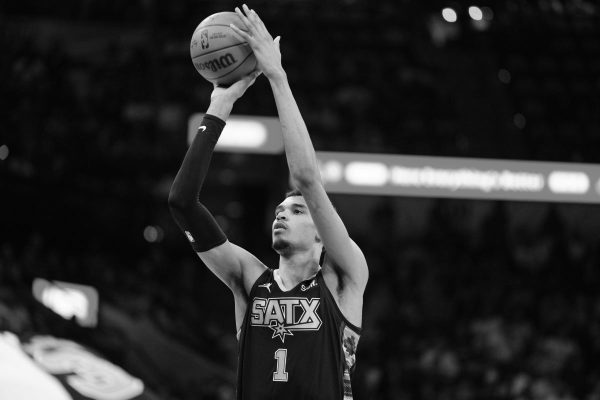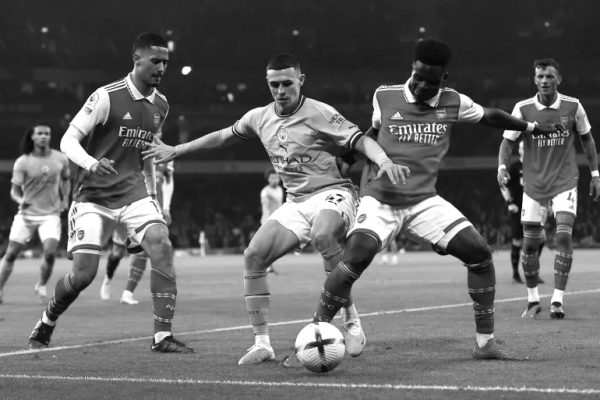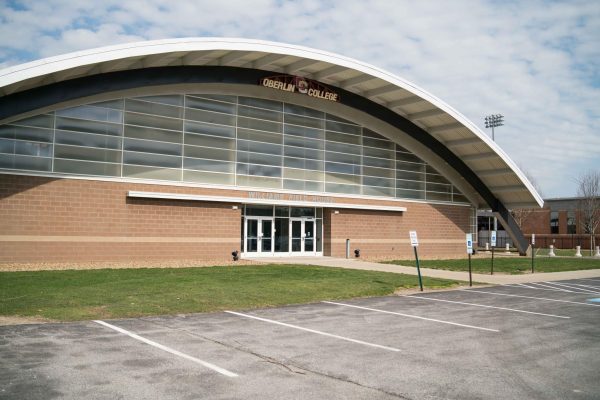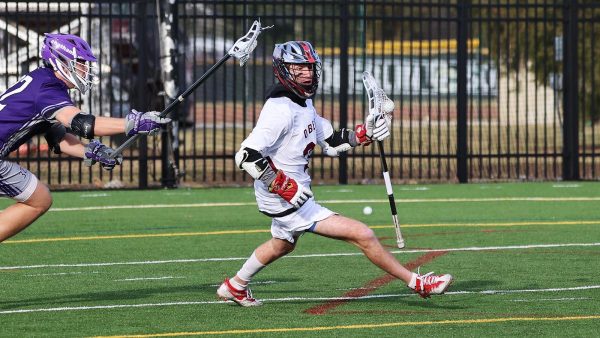Tanking Undermines Competitive Nature of Sports
Professional sports plays dirty. From performance-enhancing drugs to the NBA fixing the 1985 draft, cheating and out-of-sport advantages have always created unfair playing fields. However, some advantages are more hidden than others.
Big market teams like the New York Yankees have been poised to get whichever free agents they want, fast-forwarding the rebuilding process to just a year or two. Meanwhile, for small market teams, such as the Buffalo Bills, it is not so easy to develop into a competitor. A strategy that has been gaining momentum amongst the less fortunate professional teams, however, has finally broken into the mainstream: tanking. In other words, the best way to win in the future is to lose as often as possible now.
Competitiveness is the cardinal rule of sports. That’s the agreement that fans make with sports leagues; they pay to watch the best athletes compete at the highest level. That’s what made the 1919 World Series — when the Chicago White Sox intentionally lost to the Cincinnati Reds; they gambled against themselves — arguably the greatest sports scandal in history. Controversies like this are why OJ Simpson is in the NFL Hall of Fame, but Pete Rose — the batting king who recorded over 4,000 hits in his career but who is banned for life for gambling on his own team’s games — is not in the MLB Hall of Fame.
While good competition is the pinnacle of the sports world, front offices have a set of priorities separate from fans or players. They look at sports as a business, so being terrible isn’t a general manager’s biggest nightmare. For them, the only thing worse than coming in last place — even having the worst season in professional sports history — is ending their season with a .500 record repeatedly, never being anything but mediocre.
Sports leagues are designed so the worst teams are able to acquire better talent through the draft. In the NFL, the draft order is determined by a team’s performance from the previous season, such that the worst record picks first, and so on. The NBA has a lottery in which every team that did not make the playoffs has a chance for the first pick, the only caveat being that the odds of getting a top pick are determined by the previous year’s standings. If a team is terrible, such as the 2002–2003 Cleveland Cavaliers, they can get the first pick, consequently drafting a transcendent, franchise-defining player like LeBron James. Not every draft has a LeBron, but if a team is consistently average, they will never be great enough to win, and they will never be bad enough to draft a great player.
While the Cavs probably had LeBron in mind when they came in last place during the 2002–2003 season and the Phoenix Suns intentionally blew their last regular season game of the 2005–2006 season so they could play the Los Angeles Lakers in the playoffs, no one has ever tried harder to lose than Sam Hinkie. Hinkie, the notorious general manager of the Philadelphia 76ers from 2013 to 2016, decided that with the assets his team held, he had no way of losing in the foreseeable future, so instead he traded every good and decent player his team had for draft picks. He then used those picks on players he knew would miss at least one season due to injuries or overseas draft rights so his team would continue to perform poorly. During his four-year tenure, his teams went an abysmal 47–195, including a 10–72 last-place finish in his final year before being forced to resign.
Other teams hated Hinkie, and fans around the league mocked him, but his tactics may have just worked out. The 76ers are now poised to make a playoff push with a core of potential stars Joel Embiid, Ben Simmons, Markelle Fultz, and Dario Saric. Simmons and Fultz were considered two of the best draft prospects of the decade, and went number one overall in 2016 and 2017 drafts, respectively. Embiid, the outspoken Cameroonian who went third overall in the 2014 draft but could not play until last season due to injury, had the Sixers looking like a playoff team in the 31 games he could play, and he and Saric finished as Rookie of the Year finalists last season. While the 76ers may have tried to be competitive from 2013 to 2016, Hinkie dedicated himself to the long game more than anyone else in history. While Hinkie left the NBA with everyone thinking he had been clairvoyant, shrewd drafting and trading definitely helped his cause. Despite his success, tanking doesn’t always work out, especially when bad teams end up winning.
This NFL offseason, the New York Jets attempted a Hinkie-like rebuild. They got rid of Eric Decker and Brandon Marshall, their two best wide receivers, and put quarterback duties on Josh McCown, a 38-year-old certified second-string who has never shown the ability to lead a franchise. The Jets, who have failed to reach the playoffs since 2010 and have not won a Super Bowl since 1969, relied on a stifling defense and below-average quarterback-play for decades. After six years of mediocrity, the front office decided to strip their team of talent in order to draft Sam Darnold, the best quarterback prospect since Andrew Luck, in next year’s draft. Four games into the season, however, Josh McCown has posted a 70.1 percent completion percentage, which is second-best in the league, and the Jets stand at 2–2. While they likely will not make the playoffs, and definitely do not have the talent to win a Super Bowl, they already have enough wins to not get the first overall pick, foiling their plans and making them mediocre once again.
Players will, and should, always compete. This does not stop front offices from intentionally stripping their teams of talent in order to bottom out and then rebuild through top-flight prospects and free agency. Being a .500 team leaves little room for front offices to take the leap from good to great, but assembling a bad team does not equate to an uncompetitive team. The NBA recently changed their lottery system so the worst record has a slightly less chance of getting the top pick than before, but this did not stop the Atlanta Hawks from trading Dwight Howard and officially bottoming out to try and get Michael Porter Jr. in next year’s draft.
While some teams lose for strategy, others just genuinely perform poorly. Despite the best efforts of both their teams and their front offices, franchises like the Cleveland Browns, who went 1–15 last year and selected a potential franchise building block in Myles Garrett first overall, may just never get it right. The nature of losing is a diverse one, but at the end of the day, some teams are great, and some teams aren’t.






